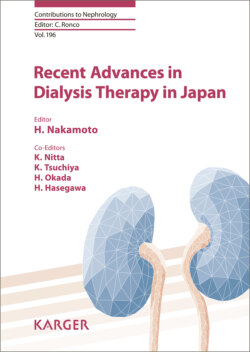Читать книгу Recent Advances in Dialysis Therapy in Japan - Группа авторов - Страница 13
На сайте Литреса книга снята с продажи.
Eosinophils and the Innate Immune System
ОглавлениеEosinophils are cells usually found in the mucosal tissues of the airway, gastrointestinal tract, etc. Eosinophils release anti-inflammatory granule proteins and lipid mediators, and are closely associated with the immune system working against parasites and with the pathophysiology of allergic diseases including asthma [15]. It is also reported that eosinophils are associated with immunological control of mucosal tissues by producing cytokines [15]. Another finding indicates that eosinophils are associated not only with acquired immunity, but with innate immunity [16]. Interleukin-5 (IL-5) helps eosinophil differentiation and regulates eosinophilic inflammation. Although IL-5 has generally been considered to be produced by the Th2 type of CD4+ lymphocytes, recent clinical trials suggest that lymphoid cells involved in innate immunity also serve as key sources [17–19]. These cells, called type 2 innate lymphoid cells (ILC2), have a characteristic function of producing large amount of IL-5 and IL-13 in a short period of time in response to cytokines IL-33 or IL-25. While ILC2 cells do not have TCR or NK cell surface markers, they develop CD25, CD44, Thyl 2, ICOS, Sca-1, IL-7Ra, c-Kit, etc., and IL-7 plays an important role in their differentiation [20].
Fig. 1. Infiltration of eosinophils was observed at the marginal part of the wall side peritoneum. Wistar rats were used. Icodextrin 10 ml (40 mL/kg) was intraperitoneally administered daily for 40 days under anesthesia. Physiological saline (NS) group, pH of icodextrin; pH group I: pH 3.5; group II: pH 5.0; group III: pH 6.5. After 20 and 40 days, the peritoneum of the viscera was collected. The number of cells was counted pathologically for the infiltration of eosinophils using an optical microscope using the HE staining method. For the measurement method, the number of eosinophils in 5 visual fields was randomly counted, and the change rate (%) was evaluated with control as a reference. Eosinophil infiltration was observed in all groups on day 20 of infusion of icodextrin PD solution into the peritoneum, but no significance was observed. After 40 days of intraperitoneal injection, group I (mean ± SD, 28.5 ± 3.11) showed a significant increase in eosinophils compared with group II (6.7 ± 1.83), group III (1.6 ± 1.83), and NS (1.0 ± 1.83) Peritoneal invasion was observed. In group II, the peritoneal infiltration into the visceral peritoneum was significant compared with group III and group NS. Statistical analysis was performed using a multiple comparison test (Steel-Dwass) and a nonparametric test. p < 0.05 was regarded as significant difference. Modified from Kobayashi et al. [10], with permission.
